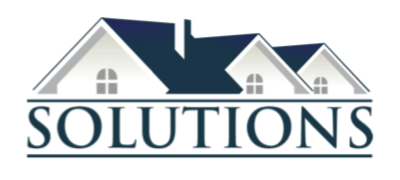What are the 2015 Home Trends?
Where once McMansions reigned supreme in new house sales, buyers today are now asking for more energy efficient, customized and smaller models. While we aren’t quite at a Jetsons-style home with dinner at the push of a button, innovation and invention are at the forefront of building industry trends.
These designs include options that are “green”, are more pedestrian-friendly – with dining, shopping and work destinations within a few minutes’ distance – and are more efficient space-wise with clever options added in, like, for example, carriage doors, instead of swing out versions, and micro-sized versions of kitchens, baths and laundry rooms.
The NAHB surveyed nearly 400 builders earlier this year about the features they were most and least likely to include in homes and communities in 2015. In addition to outdoor kitchens, outdoor fireplaces, sunrooms, main-level carpeting, and media rooms are on the decline. On the rise: walk-in closets, laundry rooms, energy-efficient windows and appliances, and programmable thermostats.
Buyers are fixated on comfort and affordability, and have changed their expectations for new homes, and homebuilders have adjusted their creations accordingly. Let’s take a look at a few options that are fast becoming the status quo in design this year.
“Zero Energy Ready (ZER),” according to a recent online Fortune article, “is today’s gold standard for efficient home design. Created by the U.S. Department of Energy in 2008, the program boasts over 14,000 energy-efficient homes resulting in millions of dollars in energy savings. The goal of a ZER Home is twofold: to be capable of being powered by renewable energy sources, and to create a healthy and comfortable environment that is durable enough to stand the test of time.”
While Energy Star has been the previous standard, ZER is proving an incredibly compatible ideal for new construction “where the specification of insulation, windows, doors and mechanical systems can be coordinated in advance of construction and performance calculated holistically. ZER technologies can also be retrofitted into existing homes.”
Smart homes – While many people might get creeped out by a fully automated home and worry whether the home is monitoring their every move, there’s a new system called Nest Learning Thermostat, which learns your patterns, then modifies the temperature accordingly on its own. Other products like AT&T’s T 1.25% Digital Life system offer integrated security systems as well as energy monitoring and even water leak detection. These systems are controlled from your smart phone or tablet, allowing you to operate your home on or off site.
Pedestrian-friendly towns – Where once people moved out to the suburbs, it’s now becoming trendy and healthier to try and move closer to work, play and entertainment. Proximity to walkable communities with a mix of uses adds to individual property value and strengthens the local tax base.
While it’s often difficult to find a home in a community closer to work, many people have shown an interest in being able to walk to work in their community or be able to get to work via transit without a long commute in a car. The solution is to build more communities with a mix of uses linked by public transportation.
Micro and Tiny are catching on – you’ve seen the Facebook posts with people touting their Tiny Houses and inviting people in for a quick tour to show off all the innovative ways they can create storage and hide clutter. Reality shows like “Tiny House Hunters”, “Tiny House Nation” or “Tiny House Builders” are popping up everywhere.
Tiny Homes offer a glimpse into an extreme world few of us will every actually enter, one filled with homes so small they’re designed with the clever precision of a yacht, down to the fraction of an inch with storage in every possible place.
The two market segments indicating the most interest in smaller homes are millennials, who either don’t want or can’t afford a mortgage in a place they want to live, and boomers who are downsizing for retirement and want to be released from paying for and maintaining a large home.
Companies like IKEA, Toto and GE are hopping on the “Tiny” bandwagon by offering products for Micro Baths, Micro Kitchens and Micro Laundry. There are creative design options for any budget – manufacturers are stepping up and offering creative design options to differentiate any home.
Personalization – Maybe you feel your old range is boring, but you can’t afford to replace a perfectly good appliance just because you don’t like the look. GE’s FirstBuild Studio is developing 3D-printed accessories for its older model kitchen appliances. The system will allow you to order new knobs, grill plates and handles in fun colors like cupcake blue or pepper red.
Color & Clear Crystal Knobs: The best way to personalize and transform a room in your home is to upgrade the elements you touch and feel, starting with cabinet hardware. Emtek Hardware offers a new line of Color and Clear Crystal Cabinet Knobs, colorful pieces that provide a modern take on a timeless classic.
Interior Carriage Doors: A new look on the interior of a house is to install sliding barn doors rather than regular swing doors. Real Carriage Door Company offers both custom and stock sliding interior doors. These are ideal for both new construction and DIY products.
According to a Pew Research survey (released in 2010), more than 62% of Americans said they’d cut back on spending since the recession began, and 31% said they’d continue to hold down their spending. This is especially true among first-time home buyers, many of whom are millennials.
Once a high-end item, granite countertops are now more popular than laminate. Builders are swapping the two-story family room for a great room. Specialty spots such as media rooms or sunrooms are being replaced by spaces that are more flexible, especially additional bedrooms. And communities with jogging and walking trails, previously coveted, are now less popular than a two-car garage.
Below you’ll find ranked lists of most and least likely features to be included in a new home, plus those that remain perennial.
Features most likely to be found in new homes:
1. Walk-in closet
2. Laundry room
3. Low-emissivity windows
4. Great room
5. Energy Star appliances
6. Energy Star windows
7. Ceiling 1st floor 9’
8. 2-car garage
9. Programmable thermostat
10. Granite countertops
Features least likely to be found in new homes and communities:
1. Outdoor kitchen
2. Laminate countertop
3. Outdoor fireplace
4. Sunroom
5. Two-story family room
6. Media room
7. Two-story foyer
8. Walking/jogging trails
9. Whirlpool tub in master bath
10. Carpeting on main level
Features most likely to last:
Solar panels, garages, additional bedrooms and decorative aging-in-place features.

